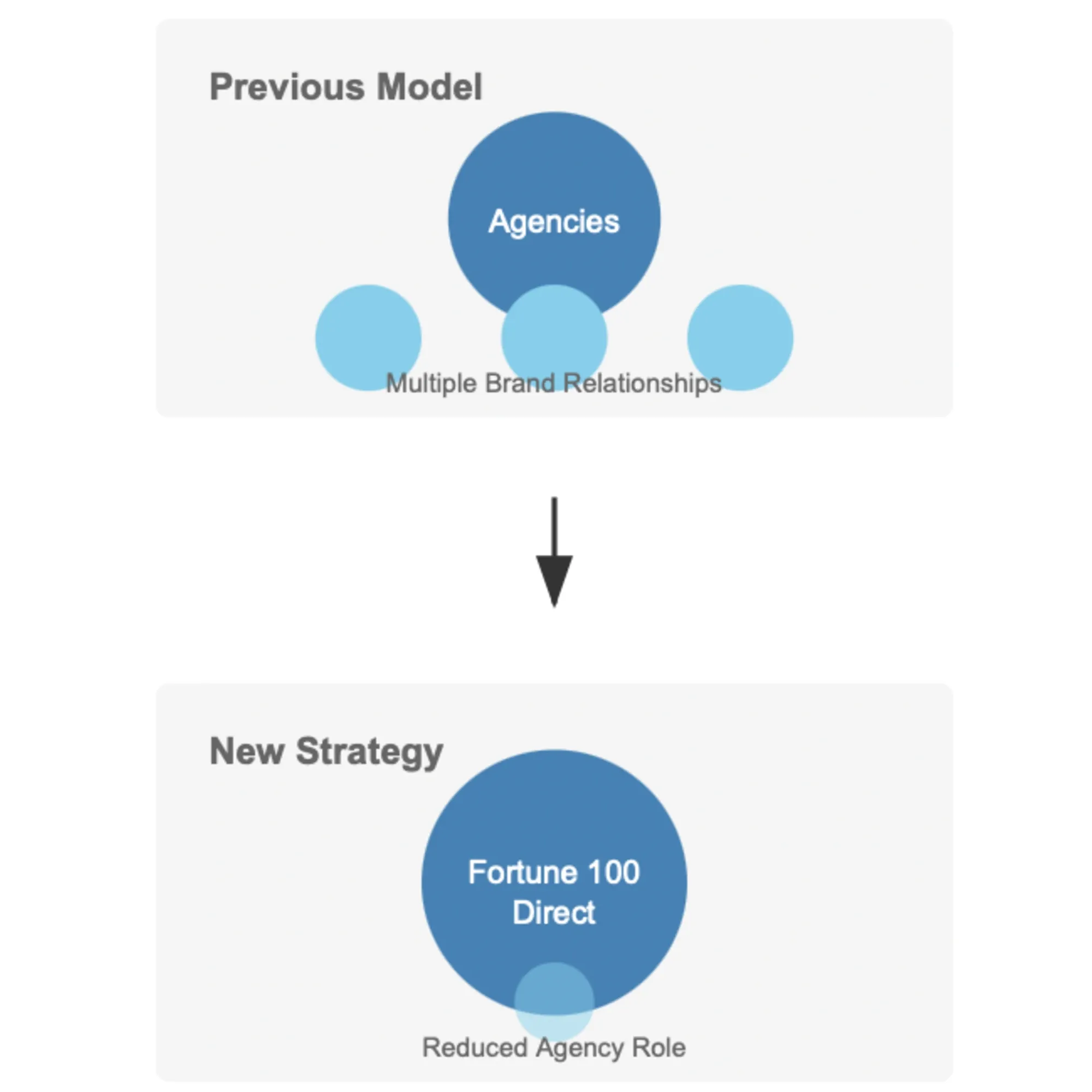Trade Desk's strategic shift raises questions about agency relationships
Major ad tech platform pivots to direct brand partnerships amid transparency concerns and platform fee scrutiny.

The Trade Desk's first earnings miss in 33 quarters has exposed deeper strategic challenges and potential market repositioning, according to industry leaders. The programmatic advertising platform's recent reorganization signals a significant shift in its approach to agencies and mid-market advertisers.
According to Chris Vanderhook, Co-Founder & COO of Viant Technology, The Trade Desk's recent strategic changes reflect a fundamental transformation in its market positioning. "TTD's #1 priority (out of 15 total) is SCALE—but that really means they're laser-focused on the Fortune 100, not the Fortune 500+," Vanderhook noted in a detailed LinkedIn analysis published nine days ago.
The company reported fourth-quarter revenue of $741 million, missing its projected $756 million guidance despite showing a 22% year-over-year increase. This shortfall triggered a 27% decline in after-hours trading, marking the end of an impressive streak of meeting financial guidance since its IPO.
The Trade Desk's December 2024 reorganization, described by CEO Jeff Green as "the largest reorganization in company history," included streamlining client-facing teams and reorganizing engineering into 100 scrum teams. However, Vanderhook suggests these changes mask deeper issues in agency relationships.
"TTD just parted ways with several high-profile executives in their HoldCo business and have diverted many sales resources toward brand direct sales," Vanderhook revealed. "TTD now treats agencies as a pass-through. The final straw? Agency reluctance to adopt Kokai."
According to Chief Financial Officer Laura Schenkein, the company achieved $12 billion in platform spend and $2.4 billion in revenue in 2024. However, Vanderhook argues that beneath these numbers lies growing tension over platform costs and transparency.
"Agencies know Kokai isn't about AI—it's about fees," Vanderhook explained. "They've been pushing back on rising costs, lack of transparency, and Google-like behavior. So, TTD is going around them, selling directly to brands."
While The Trade Desk has announced plans to accelerate the transition to its Kokai platform, Vanderhook questions the company's innovation trajectory. "That's why he's firing people and making changes to Product & Engineering teams while slotting AI at #9 on their priority list. No bold, industry-leading innovation and no clear narrative."
The Trade Desk maintains significant partnerships, including: integration with Disney's Real-Time Ad Exchange (DRAX), and extended collaboration with VIZIO, reaching over 24 million active devices.
However, Vanderhook suggests these partnerships may not offset the strategic risks. "This strategy carries great risk to TTD and great opportunity for everyone else. These 'one-size-fits-all' global platforms cater to P&G and Unilever, leaving a huge market need for others to serve diverse mix advertisers."
For Q1 2025, The Trade Desk projects revenue of at least $575 million, representing 17% year-over-year growth. However, Vanderhook suggests deeper structural challenges ahead. "TTD is in no man's land—becoming Google but staying focused on big brand advertising instead of outcomes."
Timeline of Key Events
- December 2024: Major organizational restructuring announced
- February 12, 2025: First earnings miss reported since IPO
- February 12, 2025: Share price drops 27% in after-hours trading
- February 13, 2025: Chris Vanderhook publishes critical analysis
- Q1 2025: Revenue projected at $575 million
- 2025: Planned completion of Kokai platform transition
Industry observers await The Trade Desk's execution of its 15-point strategic plan, as questions remain about its ability to maintain growth while potentially alienating key agency partners. As Vanderhook concludes, "If TTD had real answers, he would have stated them clearly. Instead, his lack of clarity suggests deeper problems—which is why investors are running for safety."

